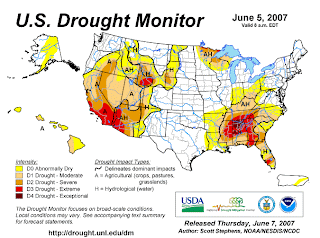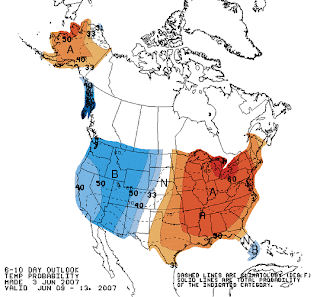 (Photos by Ben Chapman, Chickamauga, GA)
(Photos by Ben Chapman, Chickamauga, GA)
This week is Lightning Safety Awareness Week. There is no better time of year to discuss lightning than during the Summer. Lightning is often called the underrated killer. Tornadoes and hurricanes tend to grab the headlines with destruction and injuries, but lightning on average injures or kills more people each year. In fact, the odds of you being struck by lightning are far greater than you experiencing a tornado. Lightning carries an enormous electrical charge than can heat the surrounding air to over 5 times the temperature of the sun. That rapid heating and cooling of the air causes a crackling noise that we call "thunder". So, when it comes to lightning safety remember this rhyme, "When thunder roars, go indoors".
A good safety rule for lightning is the "30/30 Rule". The first "30" means that you should wait 30 minutes since the last visible lightning strike or clap of thunder heard before resuming an outdoor activity. Many area swimming pools and golf courses wisely use this rule, and you should at home as well. It does not have to be raining for lightning to occur. The charge build up is between the cloud and objects on the earth's surface. The other "30" in the rule refers to "seconds". Since light travels faster than sound, we see a lightning strike before the thunder is heard. Depending on your distance from the lightning strike will determine how much of delay will occur before you hear the thunder. When you see a lightning strike, begin counting 1...2...3, etc. For every 5 seconds that you count between the lightning strike and clap of thunder, it represents 1 mile in distance. So, if you are able to count 10 seconds between strike and thunder clap, the strike was 2 miles away. If you are able to count to "30" between the strike and clap, then the lightning strike was a safe 6 miles away. So, if you can determine that there is a 30 second or greater delay in strike to clap, it will be safe to go back outside.
Seeking shelter outside is also very tricky. You should never seek shelter under a tree or tall free standing object. Inside your car is very safe as long as the windows are rolled up. If you are ever stuck outside with no shelter available, then your best option is to drop to the ground with your arms and legs tuck together. This will make you lower to the ground and a smaller "target". When inside, stay away from windows. Power down certain electronic items that do not have a surge protector. Also, avoid a bath or shower during a thunderstorm.
There is an often quoted phrase, "Lightning Never Strikes Twice". That is a total MYTH! The Empire State Building in New York City is struck numerous times each year. And, the same can be said for many tall objects even here in the Tennessee Valley. Please take some time to go over these safety tips with your family. Even though we are in the midst of a drought, we tend to have a greater number of thunderstorms during the summer months.
Playing the role of Myth-buster again, here is another misunderstood lightning term...."Heat Lightning". Heat Lightning is nothing more than a visible strike of lightning from a thunderstorm that is too far away for the thunder to be heard.
Be sure to check out this web link from NOAA for more information about lightning safety (Link)












